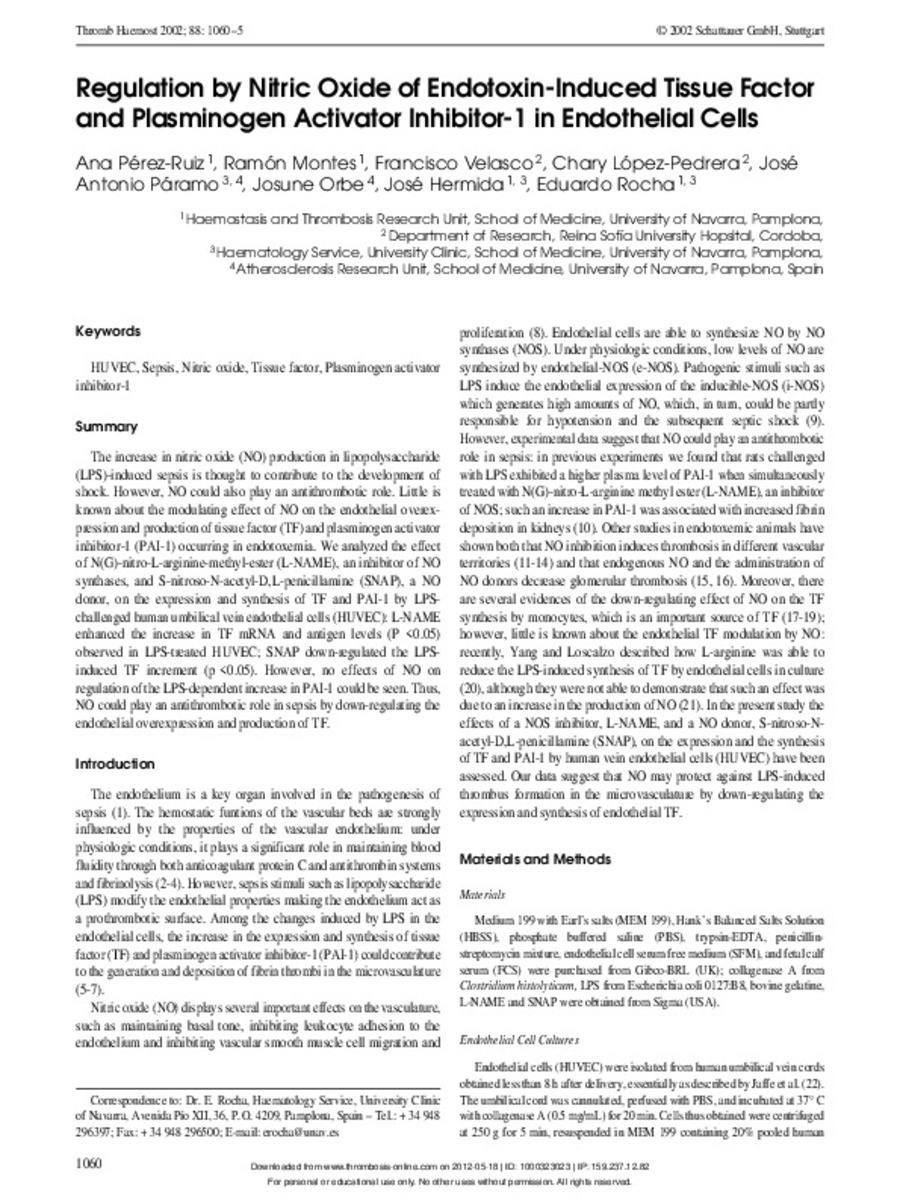Regulation by nitric oxide of endotoxin-induced tissue factor and plasminogen activator inhibitor-1 in endothelial cells
Palabras clave :
HUVEC
Sepsis
Nitric oxide
Tissue factor
Plasminogen activator inhibitor-1
Fecha de publicación :
2002
Cita:
Perez-Ruiz A, Montes R, Velasco F, Lopez-Pedrera C, Antonio Paramo J, Orbe J, et al. Regulation by nitric oxide of endotoxin-induced tissue factor and plasminogen activator inhibitor-1 in endothelial cells. Thromb Haemost 2002 Dec;88(6):1060-1065.
Aparece en las colecciones:
Estadísticas e impacto
0 citas en

0 citas en

Los ítems de Dadun están protegidos por copyright, con todos los derechos reservados, a menos que se indique lo contrario.







